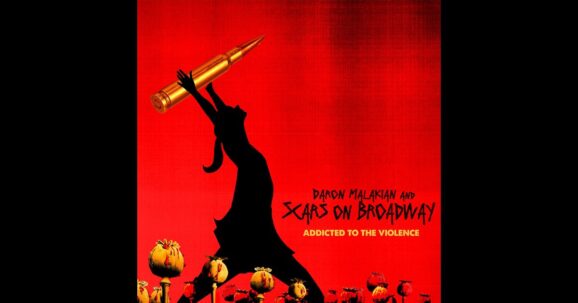This collaboration between two giants could likely only happen live in a special setting to produce the drama and improvisation contained in The Brown Beatnik Tomes – Live at BRIC. Bassist Ron Carter (who just turned 82) not only played in Miles Davis’ vaunted Quintet but holds the Guinness-certified most-recorded jazz bassist in history with well over 2200 sessions. Danny Simmons is a Tony-award winning co-founder of Def Poetry Jam, not to a mention a novelist, poet, gallerist, and now-African abstract expressionist whose paintings have in the Smithsonian and the United Nations HQ. What began as a book, became an event and the magic of that special evening in captured on this album.
The concept is turning the original beat poetry of Ferlinghetti, Ginsberg, McClure and others on its head. It’s rather interesting because when we revisit that era of poetry in the ‘50s, much of the lingo such as “hipsters,” ”cool,” “beat,” and “hepcat” was credited to white poets who were, in fact, romanticizing black people. Yes, they were into jazz, but they hadn’t lived the black experience. Simmons explains, “They were hip, but they didn’t really see the plight. That scene was largely about the Negro experience but didn’t have the Negro in it.” Ginsberg’s Howl is one of Simmons’ all-time favorites, but this project shifts the point-of-view 180 degrees to the source rather than the voyeur. Carter, of course, is old enough to have lived through the original era. He was in his twenties then, working in New York.
Carter was not part of the Beat movement even though he’s demonstrated an affinity for this kind of work by playing on aggressively political albums by Gil Scott-heron and A Tribe Called Quest. At the time, he was involved in the black community playing with people like (folk singer) Leon Bibb. Carter claims a similar thing was happening in the black music circles then but remained under the radar for mass audiences. Here, his bass playing is unpredictable, forceful, steady and at times simply mind-blowing. Imagine plucking the upright to lines like this from the title track, “I dreamed I saw Bob Dylan pay homage to an effigy of LeRoi Jones on burning Newark streets rattling a necklace of harmonicas at a passerby on slave sake.”
Carter’s touch is to blur the lines between composition and spontaneous playing. While it seems like it all fits together perfectly, you can hear, maybe even feel those special magical moments as the duo collaborates. Simmons says, “I hear the rhythm and cadence in my head when I write,” says Simmons. “To stand up there and have to reproduce that with somebody as accomplished as Ron was a little… I’m going to say ‘terrifying.’ Basically, I let him do his thing and I followed.”
There are a couple of musical interludes amidst the seven poetic readings. Carter’s trio, rounded out by pianist Donald Vega and guitarist Russell Malone, delivers the breezy “Here’s to Oscar” (a tribute to pioneering bebop bassist Oscar Pettiford) and later with the ballad “There Will Never Be Another You.” And Simmons was, in a way, accompanied by his paintings — several of which were images of the excerpt in the previous passage projected behind him. Also, playwright, actor, and Def Poetry alum Liza Jessie Peterson (The 13th, The Peculiar Patriot), brings her spoken word to the mesmeric “Where Do I Begin,”an epic rebuke of a system that openly embraces and benefits from black culture while simultaneously treating that culture’s creators as disposable or, even worse, threats that ought to be eliminated.
Just as the dichotomy between composition and improvisation colors the music, there is a marrying of the historical and contemporary aspects of black culture in Simmons’s words. The opener “Pistol,” is a resurrection of, and dedication to, the revolutionary spirit of beatnik contemporary Amiri Baraka (f.k.a. LeRoi Jones). Here are the opening lines:
a poet is a pistol with an extended clip bustin off rounds in2 da head of america and brains ooze on streets where blk children once played that are now dog runs for bleeding rich history and heresy. amiri hollow point baraka will bust a cap in ur ass on nostrand and fulton and make u get religion and revolution up in here…
A litany of the names of recently murdered blacks marks the opening of “Where Do I Begin” – For Botham Jean, Laquan McDonald, Keith Lamont Scott, Tyree King, Terrence Krutcher, Korine Gaines, Philando Castille, Alton Sterling, Samuel DuBose, Walter Scott, Sandra Bland, Rakiya Boyd, Aiyana Jones, Corine Gaines, Deborah Banner, Kendra Chapman, Freddie Grey, Eric Garner, Michael Brown, John Crawford, Akai Gurley, Tamir Rice, Jordan Davis, Trayvon Martin, Ramarley Graham, Troy Davis, Oscar Grant, Sean Bell, Chavis Carter, and the thousands of me too’s howling, “Why Me?” from beyond the grave.
Some of Simmons’ best poetry is in “The Jigaboo Waltz” too but it’s well worthwhile to listen to the entire album a few times to try to re-imagine what it must have been like to hear this live. The words of the original beat poets still are referenced and read sixty-plus years later. There’s no doubt that Carter and Simmons created echoes with this work, There’s plenty of power to let those same echoes ring a good long time too.









